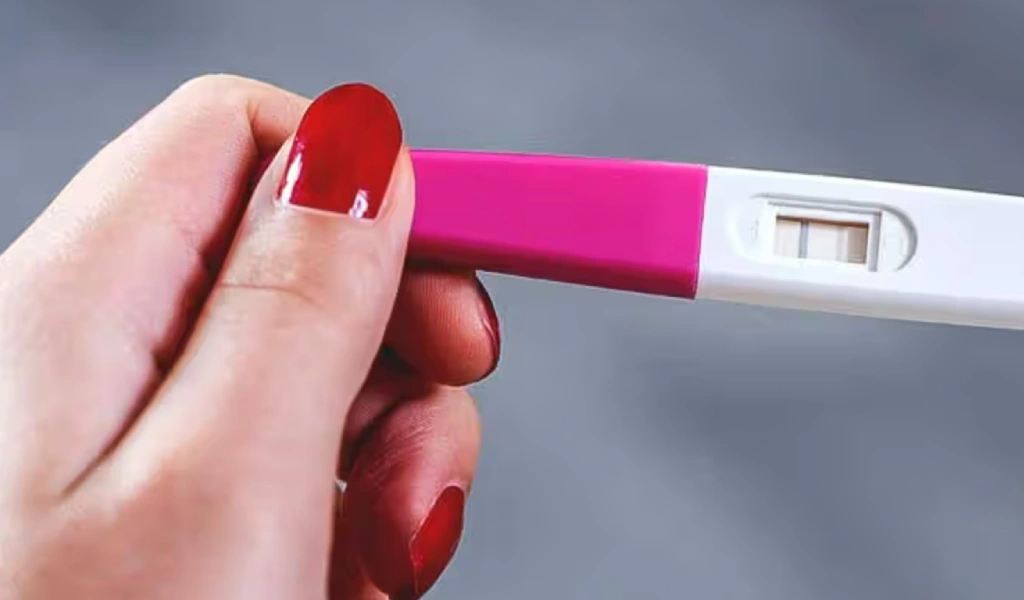The traditions to find whether you will have a baby boy or girl have been handed down over the years and are enjoyable to experiment with.
During pregnancy, it is common for loved ones to make guesses about whether it is a baby boy or a baby girl.
Some might even point out various symptoms indicating whether it’s a baby boy or a girl. These age-old symptoms and myths of having bay boy have been passed down through generations out of curiosity, particularly when ultrasound scans were not easily accessible.
While it can be entertaining to try and predict gender based on symptoms, it’s important not to give too much weight to these beliefs as they lack scientific evidence. Below are some myths surrounding the baby’s gender that are often talked about during pregnancy.
What factors determine the gender of a child?
The gender of a baby is decided by its chromosomes at the moment of fertilization, which occurs when the sperm and egg meet. Each parent contributes 23 chromosomes to the embryo, with one pair being the sex chromosomes that determine the baby’s gender. A female baby has two X chromosomes, while a male baby has one X and one Y chromosome.
Sexual disparities start to emerge during the seventh week of pregnancy, and both genetic and environmental elements shape them.
The population may have a natural bias towards baby boy births. Studies indicate a slightly higher probability of having a baby boy than a girl. Various data indicates that baby boy births have consistently outnumbered baby girl births in all countries over the years.
Identifying the Signs of Having a Baby Boy – Debunking Myths and Confirming Realities
In this article ‘Top Signs You Are Having a Baby Boy During Pregnancy‘ we have compiled a list of typical symptoms that are often believed for having a baby boy. Let’s debunk the myths surrounding predicting the baby’s gender to make it an enjoyable guessing game!
1. Getting Morning sickness
Myth: When you do not have morning sickness or nausea, it indicates that you are pregnant with a baby boy.
Fact: Nausea and vomiting, commonly known as morning sickness, is a prevalent pregnancy symptom that impacts 70% to 80% of expectant mothers. Typically occurring in the early stages of pregnancy, some women may continue to experience it until childbirth. Hormonal fluctuations are thought to be the cause, rather than the gender of the baby.
2. Variation in Heart rate
Myth: One of the indications that you are pregnant with a baby boy is a heart rate that is less than 140 beats per minute.
Fact: The assertion lacks evidence to back it up. A research paper called Gender-Related Differences in Fetal Heart Rate during the First Trimester disproves this misconception by stating that there is not a notable discrepancy in heart rates between baby boy and baby girl fetuses during the initial trimester.
No matter what the baby’s gender is, the typical fetal heart rate ranges from 120 to 160 beats per minute. It can be higher (140 to 160 bpm) in early pregnancy and lower (120 to 140 bpm) in the later stages of pregnancy.
Many experts suggest that relying on the difference in heart rates between baby boys and baby girls is not a reliable method for determining the gender of the baby. The most dependable way to determine the gender of a baby is through an ultrasound around 20 weeks or later.
3. Skin and hair color variations
Myth: Having clear and flawless skin indicates that you are expecting a baby boy, while a girl takes away the mother’s beauty, resulting in skin problems. If a woman is pregnant with a baby boy, she may also experience longer and shinier hair.
Fact: There is no research evidence to back up these assertions. Skin and hair changes while pregnant are a result of variations in hormone levels. Fluctuations in hormones can lead to radiant skin and glossy hair, or acne and hair loss, regardless of the gender of the baby.
4. Having Food cravings
Myth: If you have a preference for sour or salty foods, there is a higher probability that you will have a baby boy.
Fact: There is no scientific proof backing up this assertion. The desire for certain foods can be attributed to hormonal fluctuations, lack of certain nutrients, presence of pharmacologically active substances in specific foods, as well as cultural and psychosocial influences. Nevertheless, there is a lack of sufficient research to validate these theories.
5. Position of the Tummy
Myth: Having a baby boy that sits lower is a possible indicator that you are expecting a male child.
Fact: How you carry yourself does not reveal the gender of the baby. According to a study in Birth Journal, none of the methods used to predict a baby’s gender were accurate. Changes in a pregnant woman’s posture may be influenced by the size of the baby and the shape of the uterus.
6. Various Mood changes
Myth: If you are expecting a baby boy, you are not likely to experience mood swings, however, if you are pregnant with a baby girl, you may be more prone to them.
Fact: During pregnancy, changes in hormones are responsible for mood swings, rather than the gender of the baby.
7. Urine color variations
Myth: During pregnancy, the color of your urine may change, and if it is dark, it is a sign that you are expecting a baby boy.
Fact: During pregnancy, women may observe alterations in their urine. A deeper hue could suggest dehydration, commonly triggered by morning sickness. Various elements such as dietary intake, medication usage, and supplement use can influence the color of urine, but it is unrelated to forecasting the gender of the baby.
8. Breast size matters
Myth: When you hold a baby boy, your right breast appears larger than the left breast.
Fact: During pregnancy, hormonal changes lead to increased blood flow and alterations in breast tissue, resulting in a larger feel. The breasts typically swell as they get ready to produce breast milk for the baby. This swelling continues as the pregnancy progresses, aiding in the preparation for breastfeeding post-delivery.
Despite these changes, there is no conclusive evidence linking breast modifications to the baby’s gender.
9. Having Cold feet
Myth: Having cold feet may suggest that you are pregnant with a baby boy.
Fact: During pregnancy, experiencing cold feet may be caused by insufficient blood flow, diabetes, or very cold temperatures. It is recommended to seek advice from a medical professional for proper evaluation and treatment.
10. Weight gain
Myth: When a woman is pregnant with a baby boy, she typically gains weight in her stomach area, whereas if she is expecting a baby girl, the weight gain is more evenly distributed throughout the body, including the face.
Fact: During pregnancy, the majority of women experience weight gain, which is considered an important aspect of a healthy pregnancy and not influenced by the baby’s gender.
Medical examinations that could reveal the gender of your unborn child
Here are some common medical procedures that can be utilized to determine the sex of your unborn baby:
1. Ultrasound
Determining the gender of the baby through ultrasound is a non-invasive method typically performed between the 18th and 22nd weeks of pregnancy. When the baby’s position is not favorable or if the pregnancy is not advanced enough, the sex may not be detectable during the ultrasound.
In such instances, another scan may be necessary.
2. Fetal DNA blood tests
In a recent study, it was found that obtaining a blood sample during weeks 6 to 10 of pregnancy may yield insights into the gender of the baby, as reported in The Proceedings of the National Academy of Sciences (PNAS) journal.
The DNA from the fetus can be found in the mother’s blood and can indicate the baby’s sex by determining the Y-chromosomal sequence. These tests are usually only performed for women over the age of 35 who require genetic testing.
3. Genetic Testing
Invasive techniques like amniocentesis and chorionic villi sampling offer a precise means of determining the gender of the baby. While the fetal DNA blood test is also available, it may not offer early detection of gender compared to the aforementioned procedures.
Amniocentesis is typically done after the 15th week of pregnancy, while CVS is done after the 11th week. Both procedures have a low risk of causing a miscarriage, so they may be recommended for older couples or those with a genetic disorder history.
If you prefer to keep the baby’s gender a surprise but still want to enjoy guessing whether it’s a baby boy or a baby girl, we have some suggestions for fun activities.
Fun games to help you guess if you are expecting a baby boy
Here are a few enjoyable activities you can do to try and guess the gender of the baby. It is important to remember that these methods are simply for entertainment and are not based on scientific evidence or recommended for determining the baby’s gender.
1. The Game of Wedding Ring Trick
- Attach your wedding ring to a lengthy string and hold the ring over your round belly.
- If the ring rotates in a circular pattern, it may indicate that you are expecting a baby boy.
2. The Key To The Mystery
- You are instructed to select the key that is placed in front of you in this magic trick.
- By old customs, it is believed that choosing the longer end of the key indicates a baby boy will be born, while selecting the round end indicates a baby girl.
3. Chinese Lunar Calendar
- The Chinese birth calendar, created over 700 years ago, is thought to assist in predicting the gender of a baby.
- The chart can predict the gender of your baby based on your specific birthday and the month in which you conceived.
Determining the gender of your baby might be thrilling, but it could be even more exciting to maintain the suspense until the delivery date. Symptoms like carrying low, experiencing more mood swings, having darker urine color, or having cold feet are often considered indicators of carrying a baby boy.
These can be fun ways to try to guess the gender, but there are no scientifically proven signs to accurately determine whether you are having a baby boy or a baby girl.
The only reliable methods for determining the gender of the baby are through medically accepted procedures such as ultrasound after a specific period, fetal DNA blood tests, or genetic testing. However, in some countries, prenatal sex determination tests are illegal, and the doctor may not reveal the baby’s gender.
Key Pointers of ‘Top Signs You Are Having a Baby Boy During Pregnancy’
- It is common for pregnant women to experience morning sickness, which is not related to the sex of the baby.
- Research shows that there is no substantial proof of variations in the heart rate of male and female fetuses.
- Pregnant women often experience mood swings, regardless of the gender of the baby.
- Ultrasound, DNA tests, or genetic tests are the only reliable methods to determine the gender of the baby.




























